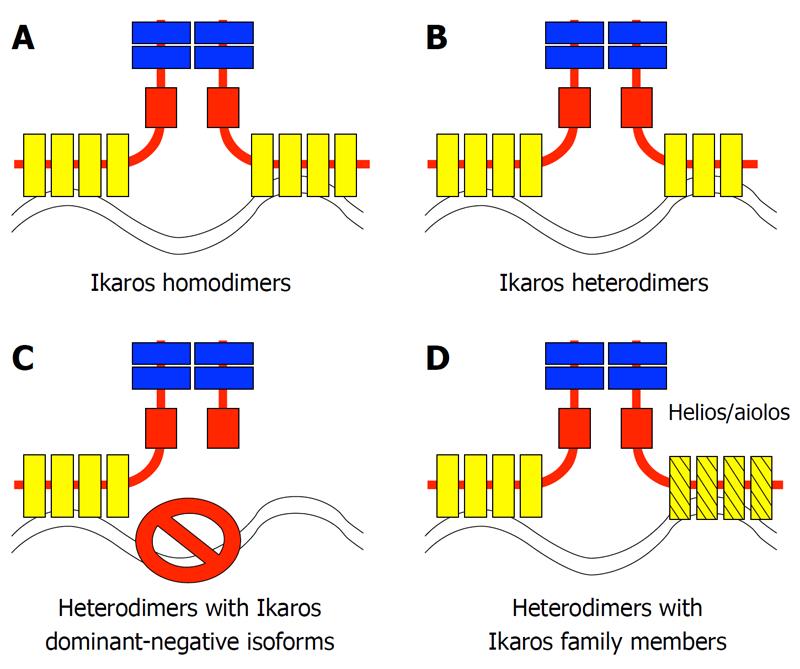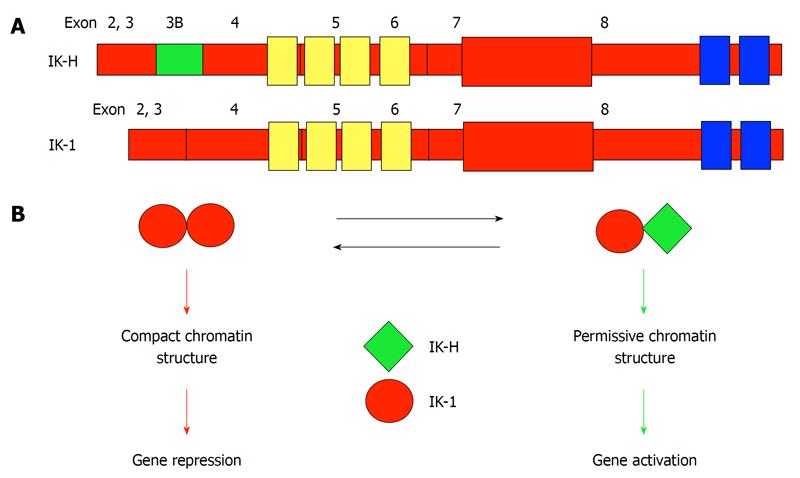Copyright
©2011 Baishideng Publishing Group Co.
World J Biol Chem. Jun 26, 2011; 2(6): 140-145
Published online Jun 26, 2011. doi: 10.4331/wjbc.v2.i6.140
Published online Jun 26, 2011. doi: 10.4331/wjbc.v2.i6.140
Figure 1 The association of Ikaros proteins with Ikaros isoforms and Ikaros family members controls the activity of the Ikaros protein complex.
The four main types of Ikaros family-containing protein complexes are shown. A: Homodimers of the most abundant Ikaros isoform (IK-1); B: Heterodimers of IK-1 with DNA-binding Ikaros isoforms; C: Heterodimers of IK-1 and DNA-nonbinding (DN) Ikaros isoforms - this complex does not bind DNA; D: Heterodimers of Ikaros with its other family members (e.g. Helios or Aiolos).
Figure 2 A model for IK-H regulation of human gene expression.
A: Exon structure of IK-1 and IK-H. The 20 amino acids encoded by Exon 3B distinguish IK-H from IK-1. Zinc fingers responsible for DNA binding are shown in yellow. Zinc fingers responsible for dimerization are shown in blue; B: A protein complex that contains IK-1 homodimers binds DNA tightly, leading to a compact chromatin structure and gene repression. Binding of Ikaros protein complexes that contain IK-H changes chromatin into a permissive structure leading to activation of gene expression.
- Citation: Li Z, Perez-Casellas LA, Savic A, Song C, Dovat S. Ikaros isoforms: The saga continues. World J Biol Chem 2011; 2(6): 140-145
- URL: https://www.wjgnet.com/1949-8454/full/v2/i6/140.htm
- DOI: https://dx.doi.org/10.4331/wjbc.v2.i6.140










